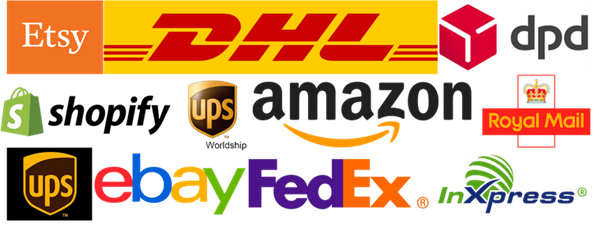Most e-commerce businesses are regularly shipping their goods to clients, and so an efficient and reliable label printer is an essential tool to meet these demands. With a huge number of options available in the market, how do you determine the best fit for your business and shipping application? This comprehensive guide will help you understand the key considerations before purchasing a label printer and provide recommendations based on our experience.
Types of label Printers
Label printers primarily use a process called Direct Thermal printing to produce shipping labels, which employs heating elements within the printhead to create an image on thermally coated label materials.
For shipping purposes, we’ll focus on two types of Direct Thermal printers: Desktop and Industrial.
- Desktop Label Printer: Ideal for small-scale businesses, these printers are compact, low cost and operate quietly. Desktop label printers are ideal for operations that require printing of up to a few hundred labels per day and so are not suited to large volume printing requirements unless the printing is being shared amongst numerous devices.
- Industrial Label Printer: These printers can easily manage the heavy workload of producing thousands of labels daily. Commonly used in factories and large enterprises for efficient label printing in seconds. With the capability to match the output of four desktop label printers combined, they are the ideal choice for printing large numbers of shipping labels per day.
Key Factors to Consider When Choosing a Shipping Label Printer
- Print Demands: Consider the daily label output that you will need from the printer both now and in the near future. The larger the demand, the larger the printer required.
- Space – How much space is available to house a printer - Desktop printers are very compact, similar in size to a domestic toaster whereas industrial label printers more resemble a large microwave oven in size.
- Connectivity - Small printers can be supplied with just a USB port, whereas more advanced models and larger style printers will have options for Ethernet & Wi-Fi connectivity for enabling sharing between workstations
- Print Resolution: The resolution affects the quality of the label and this can sometimes be crucial in order to produce sharp and clear text on the label. You can select from 203, 300, or even 600 DPI models but it is worth noting that high-resolution printers are more costly and for general shipping applications 203 DPI is usually more than sufficient.
Advantages of Direct Thermal Printing
Fast & Efficient Operation: Modern thermal label printers are simple and quick to set up and only require rolls of labels to be loaded inside in order to start printing shipping labels. There’s no ink rolls or toner cartridges required so the changing of label rolls is very quick and simple to manage.
Performance: Traditional A4 inkjet or laser printers can be slow and ineffective, and are wasteful if you only need to print single labels at a time. Thermal label printers can produce single labels at a time but are also capable of printing up to 90 labels per minute and so are highly efficient by comparison.
Cost: Desktop printers are very low cost nowadays and start at less than £200 + VAT making the payback on your initial investment extremely quick given the performance advantages it brings.
Which Label Printer is ideal for me?
Entry Level - If you're looking to print just a handful or even a few dozen shipping labels each day from a single PC, then the low cost Zebra ZD220D Desktop Label Printer with USB connection is an ideal starting point.

Advanced or Shared Connectivity – Organisations that need to share a label printer across a network via wired or Wi-Fi connection would be advised to look at the ZD230D Desktop printer -

High Volume Label Printers: For any business printing hundreds of labels a day, it may be wiser to invest in an industrial printer to meet your operational needs. These models are more robust and can handle a higher volume of printing without damaging the print head and require fewer daily label roll changes due to their increased capacity. For larger scale shipping applications we would recommend Zebra’s range of ZT Series Label Printers

Flexible Printing Capabilities- All of the above models are capable of creating standard size 4 x 6 inch shipping labels, or indeed other sizes too and we fully endorse & support them for use with the following shipping portals and services:

It is worth noting that both UPS Worldship and FedEx Zebra Printers have now been discontinued. This includes the UPS WorldShip ZP450, ZP500, ZP505 and FedEx TLP2844, LP2348 and LP2844 models.
Is Investing in a Thermal Label Printer worth it?
Absolutely! A thermal label printer will save you money in the long run by eliminating the need for ink cartridges or 3rd-party print services. You can also apply for free supply of thermal labels from Royal Mail, DHL, FedEx or UPS (If you currently ship using their services) to reduce your costs even more by using some of our handy links below.
https://www.ups.com/gb/en/shipping/order-supplies.page
https://www.royalmail.com/business/shipping/online-mail-supplies
https://www.fedex.com/en-gb/shipping/packaging.html
We trust that this article has been beneficial to those in
search of a suitable replacement for their UPS WorldShip and FedEx Printers, as
well as to new businesses embarking on the journey of printing shipping labels.

